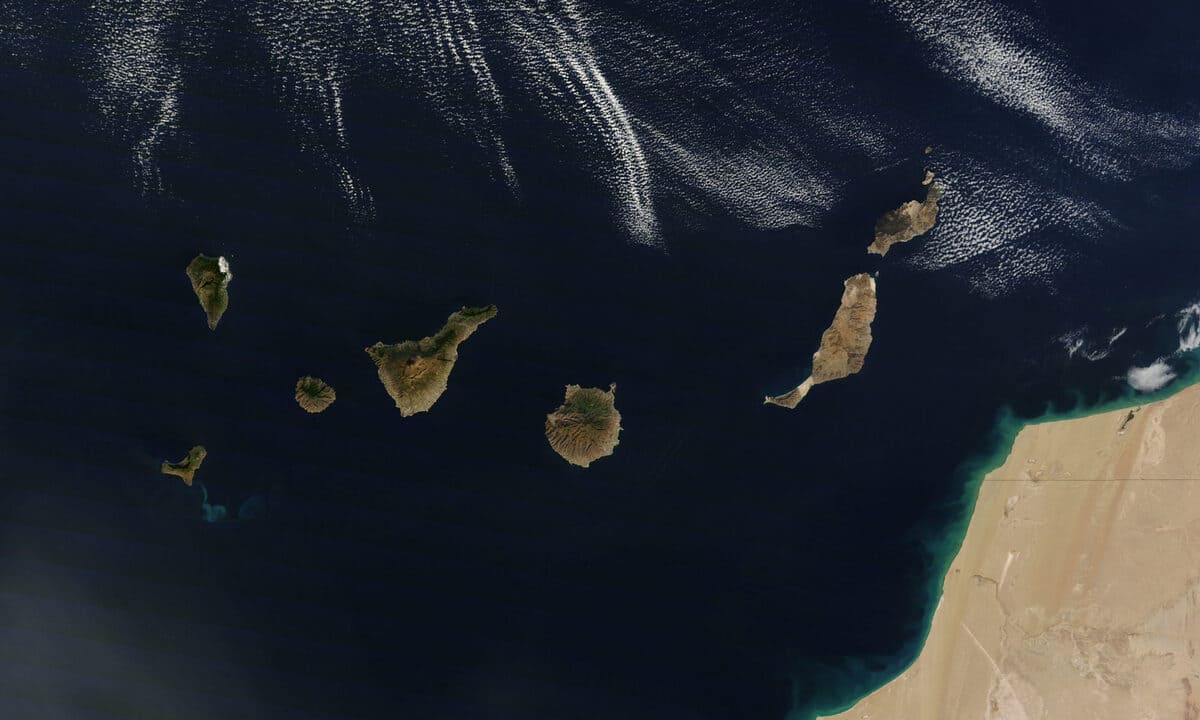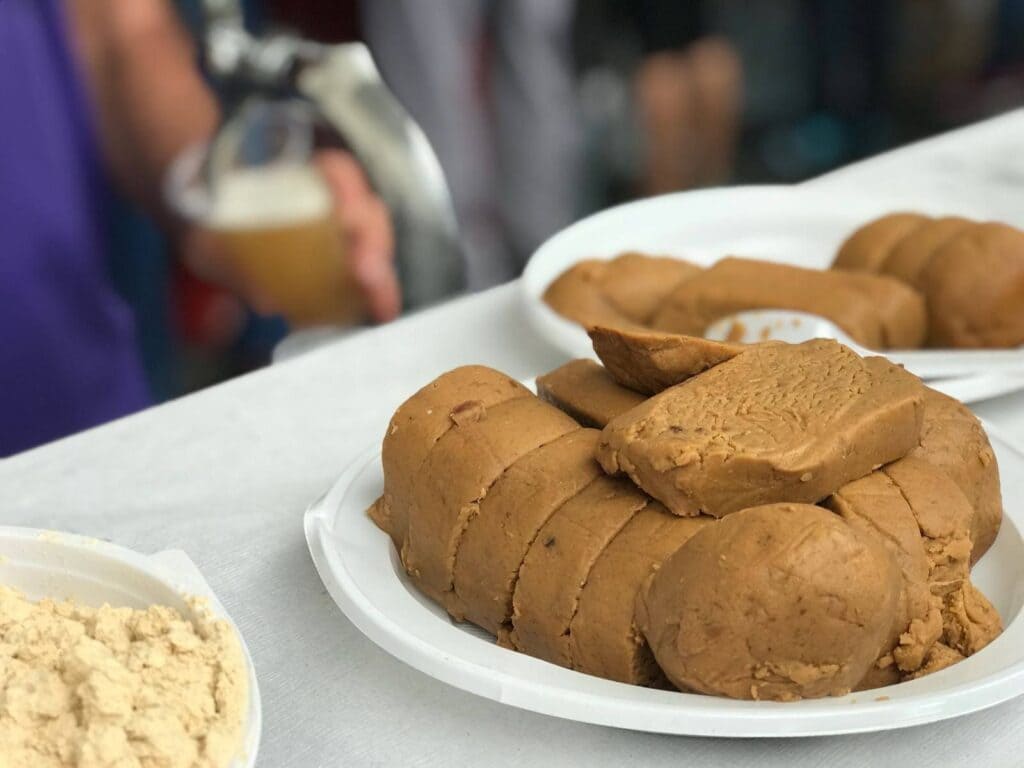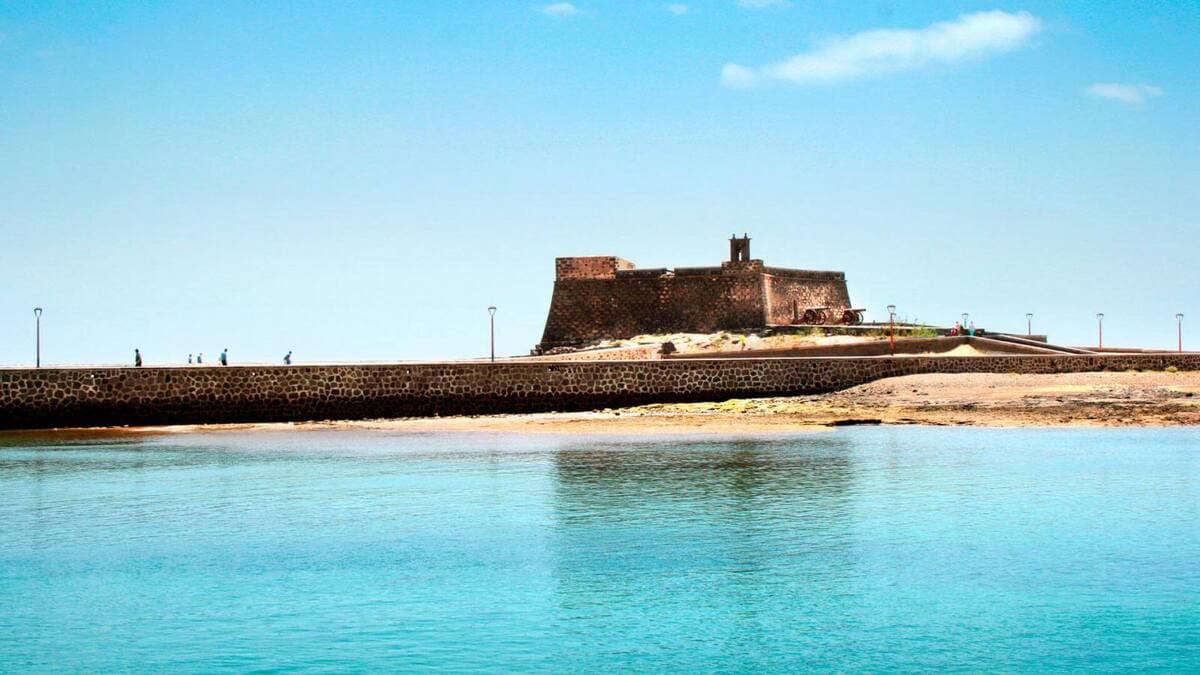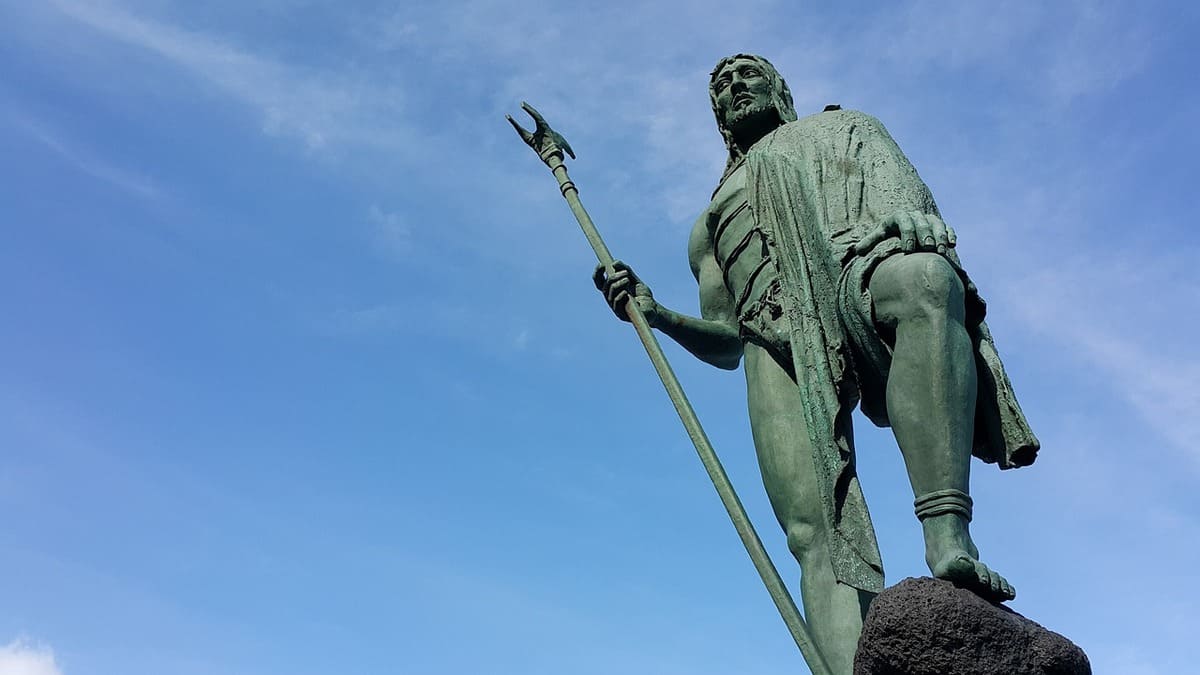The Canary Island cochineal is an insect of great economic and historical importance. From it is extracted the carmine, a natural dye known worldwide that is used in areas such as cosmetics, food or textiles. The cochineal, as it is known in the Archipelago, is a parasite of plants such as the cactus that came to the islands from America and was bred in cactus plantations in the 19th century.
The Canary cochineal has a Protected Designation of Origin and makes the Canary Islands one of the most important cochineal production sites in the world.
History of the canary cochineal in the islands
The cultivation of cochineal in the Canary Islands was introduced in the first third of the 19th century, after one of the cyclical crises of agriculture where the substitution of sugar and vine crops was proposed. This coincided with the boom of the textile industry in Europe, which demanded all kinds of dyeing substances, including carmine.
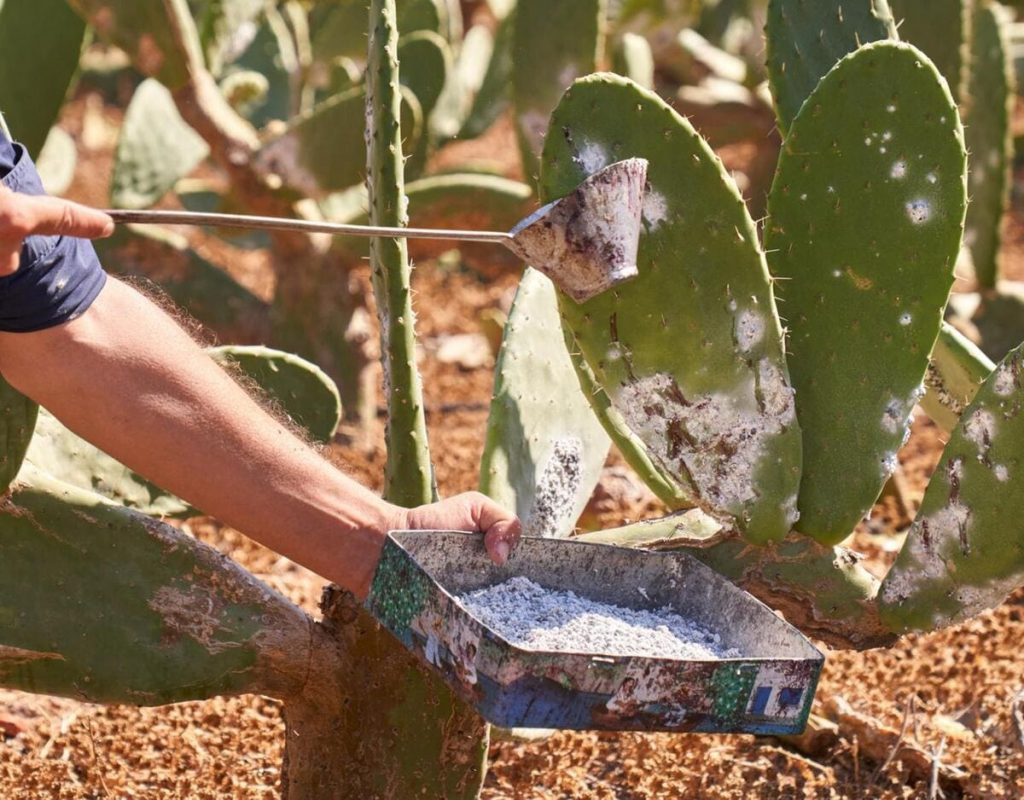
The cultivation of the Canary cochineal as a major economic and export activity of the islands did not occur until well into the nineteenth century, when foreign trade was legalized. From that moment on, the cochineal dye was successfully exported to the textile industries of France and the United Kingdom. Thus, it became the main economic activity in the Canary Islands until the discovery of synthetic dye. From that moment on, bananas and tomatoes took over as the main exported product of the Canary Islands.
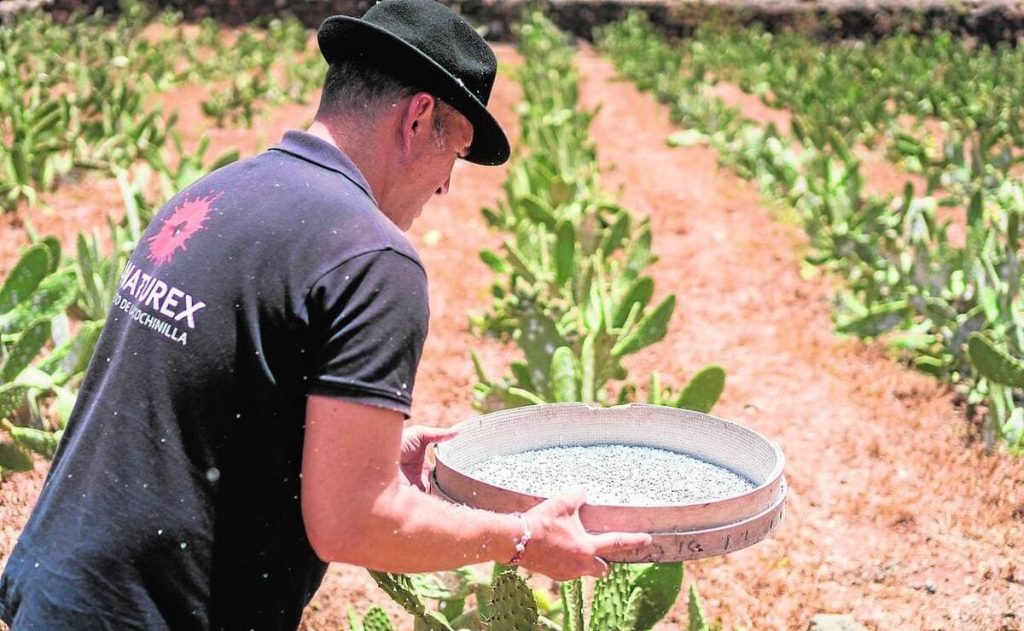
The best production years were from 1845 to 1866. The year of highest production was reached in 1869. In those moments of splendor, the price of cochineal reached the amount of 5 shillings, one pound, that is, around 12 pesetas per kilo. The islands found their best customer in England, as in the past with wines, and even an exclusive market was established with it.
At the present time
The deep-rootedness of this crop in the culture of island farmers, which seemed to be heading towards extinction at the beginning of the 21st century, has managed to maintain its activity in the Canary Islands. In fact, it is currently recognized by the European Union with the Protected Designation of Origin "Cochinilla de Canarias", being this archipelago the only European territory where cochineal is produced for commercialization.
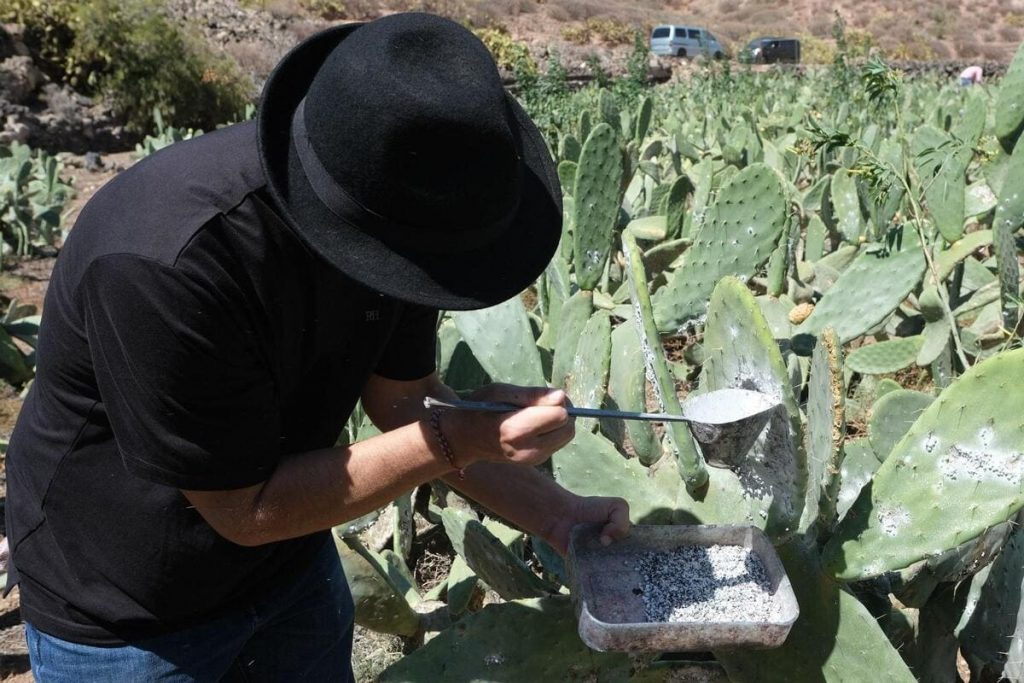
Canary cochineal: what it is and how it is harvested
This insect belongs to the order of hemiptera, characterized by its sucking proboscis, which allows it to live exclusively on the cactus plants in which it lodges. Its body is soft, flat and oval. Females do not have wings and measure between 5 and 6.5 millimeters. However, males do have wings and are even smaller, about 2.2 millimeters long. The carminic acid, present inside their bodies, is only extracted from the female mealybug. These female insects are arranged in large clusters that look like white pads on the plant.
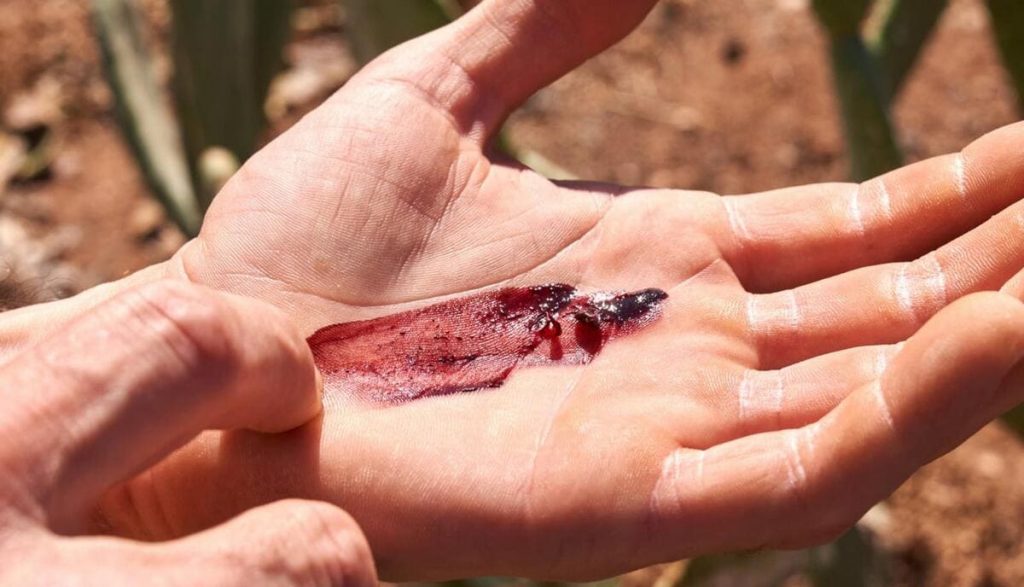
Collection of this insect
To collect the cochineals from the shovel of the prickly pear cactus a spoon is used, choosing the largest ones. Then they are poured on a board and dried. Two weeks later, the cochineal is chosen and cleaned well, which is then stored in canvas sacks so that it transpires and does not rot.

Of the adult cochineal collected, the part that is alive when it is placed on the board is destined for rearing. For this purpose, it is placed in 50-gram sacks, which are tied and taken back to the tunera plantation. These sacks are distributed throughout the crop, on the first year's shovels. This is done at the end of winter, already in March, to obtain three to four harvests during the summer. On the other hand, the dried cochineal is used to make the reddish dye that gives color to drinks, food, cosmetics and even handmade fabrics made on the islands themselves.
Paula Vera
Photos: rove.me; laprovincia.es; holaislascanarias.com
